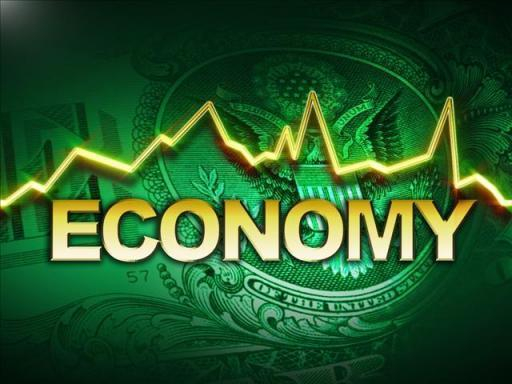Market Data

October 23, 2020
Beige Book: Modest and Mixed Economic Growth
Written by Sandy Williams
Economic activity grew at a slight to modest pace in early October with inconsistency among sectors, says the Federal Reserve’s latest Beige Book. Manufacturing activity growth was moderate and the sector added jobs across the country. Demand for new and existing homes kept residential construction robust, but interest in commercial real estate leasing deteriorated. Construction remained strong, however, for warehouse an industrial space.
Sales of autos were steady but impacted by low inventories at dealerships. Prices for autos rose significantly in the past month. Consumer spending continued to be positive, but with some slowing in certain Districts. Tourism saw a slight uptick as pandemic restrictions eased. Restaurant activity is expected to slow as colder weather moves in and reduces ability to dine outdoors, among continued COVID-19 concerns.
Almost all Fed Districts reported an increase in employment, particularly in manufacturing, although firms continued to report new furloughs and layoffs. The labor market remained tight due to health and childcare concerns, although some Districts said firms were having less difficulty finding workers. Wages were up slightly in most Districts as an incentive to attract workers, especially for low-wage and high-demand jobs.
Input costs increased faster than consumer prices but some sectors, such as construction, manufacturing, retail and wholesale were able to pass those costs on to customers. Steel and lumber were among higher input costs cited, along with costs associated with protection from COVID-19.
District highlights from the Federal Reserve Beige Book follow:
Boston — Economic activity continued to improve from the end of August through September. Revenues of responding firms were generally ahead of the year-earlier period, albeit not strongly. Housing markets saw strong demand and limited supply, leading to home price increases. Outlooks were mostly positive, but contacts expressed considerable uncertainty.
New York — The regional economy has grown slightly in recent weeks, with activity still well below pre-pandemic levels. Manufacturing, housing markets and tourism have all picked up somewhat, while consumer spending has leveled off. Employment and wages have held steady. Selling prices have been little changed, on balance, though more firms plan to raise their prices in the months ahead.
Philadelphia — Business activity grew slightly during the current Beige Book period, but remained well below levels attained prior to the onset of COVID-19. Employment sustained a modest rebound, while wages rose slightly and firms struggled to attract workers. Prices also rose modestly amid price spikes. With the pandemic ongoing and the stimulus ended, uncertainty remained extremely high in anticipation of layoffs, foreclosures and bankruptcies.
Cleveland — The Fourth District economy expanded at a moderate pace, and more firms increased staffing to keep up with rebounding demand. However, labor shortages persisted, with many workers sitting out of the labor force. While firms expect conditions to improve further in coming months, elevated uncertainty resulted in many firms’ opting to hold cash and forgo capital expenditures.
Richmond — The Fifth District economy expanded modestly in recent weeks, but economic activity was below pre-pandemic levels. Employment rose, as demand for part-time and temporary workers increased, but wages and prices held fairly steady. Shipments and manufacturing activity increased, and the housing market was strong, but commercial real estate and lending were soft, and the hospitality market remained weak.
Atlanta — Economic activity improved somewhat. Labor market conditions improved modestly, and nonlabor costs were generally stable. Retail activity was soft. Activity in tourism and hospitality remained muted. Residential real estate demand increased and home prices rose. Commercial real estate conditions stabilized. Manufacturing activity improved. Conditions at financial institutions stabilized.
Chicago — Activity increased robustly, but growth slowed and activity remained below pre-pandemic levels. Employment and consumer spending increased robustly; manufacturing increased moderately; construction and real estate increased modestly; and business spending increased slightly. Wages increased slightly and prices rose modestly. Financial conditions were little changed. Rising prices lifted farm income.
St. Louis — Reports from contacts suggest economic activity has increased slightly but remains highly variable across sectors. Auto dealers continued to report strong sales despite inventory shortages. Restaurants reported some improvement, but expect activity to decline due to cooler weather. Most District crop yields and production are up significantly over the prior year, with only cotton production lower.
Minneapolis — Ninth District economic activity grew slightly. Employment was flat overall, but volatile, with many firms either adding or cutting workforce. Labor availability tightened and wages gained some traction. Growth continued in manufacturing and residential construction and real estate. But most other sectors were either flat or down; agriculture conditions improved thanks to a good crop outlook, but remained weak due to low prices.
Kansas City — Economic activity continued to increase in September, albeit at a slower pace than during the summer months. Consumer spending declined modestly, with drops in retail, auto, restaurant and tourism sales. However, activity rose in the manufacturing, residential real estate, wholesale trade and transportation sectors. In addition, the energy sector stabilized somewhat and the agriculture sector improved slightly.
Dallas — Growth in the Eleventh District economy picked up pace, particularly in services and manufacturing, though activity remained well below normal levels. The housing market continued to perform well. Energy activity remained depressed but started to show some signs of improvement. Outlooks were largely positive but highly uncertain, particularly with regard to the presidential election and the unknown trajectory of the COVID-19 pandemic.
San Francisco — Economic activity in the Twelfth District expanded moderately. Employment levels increased modestly, while price inflation rose marginally. Sales of retail goods rose noticeably, while conditions in the consumer and business services sectors improved somewhat. Manufacturing expanded moderately, and conditions in the agriculture sector improved modestly. Residential real estate activity increased further, while the commercial market was broadly unchanged. Lending picked up at a fair pace.







